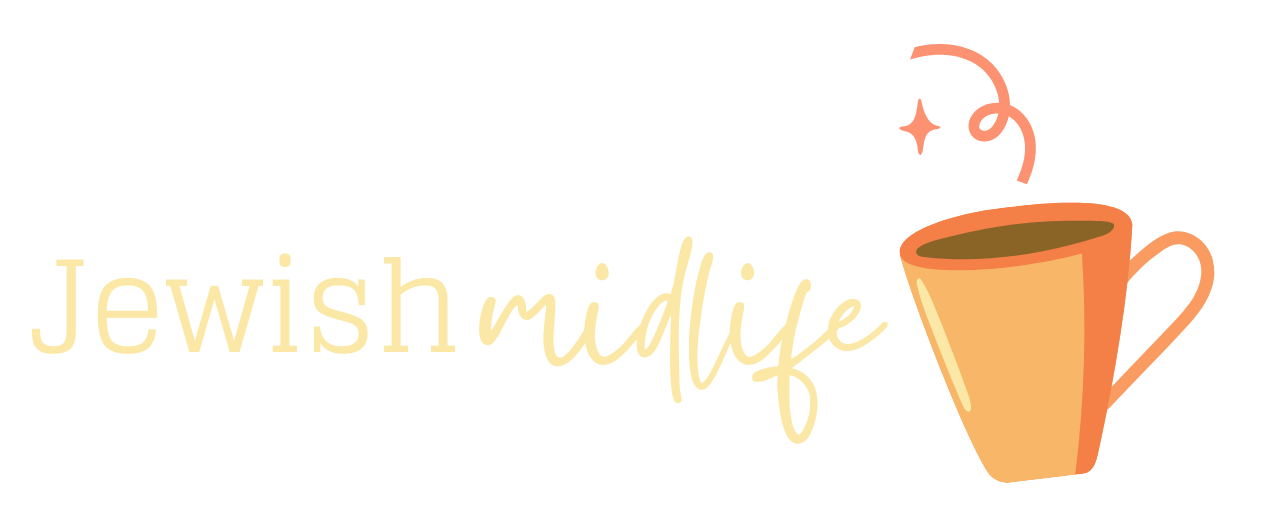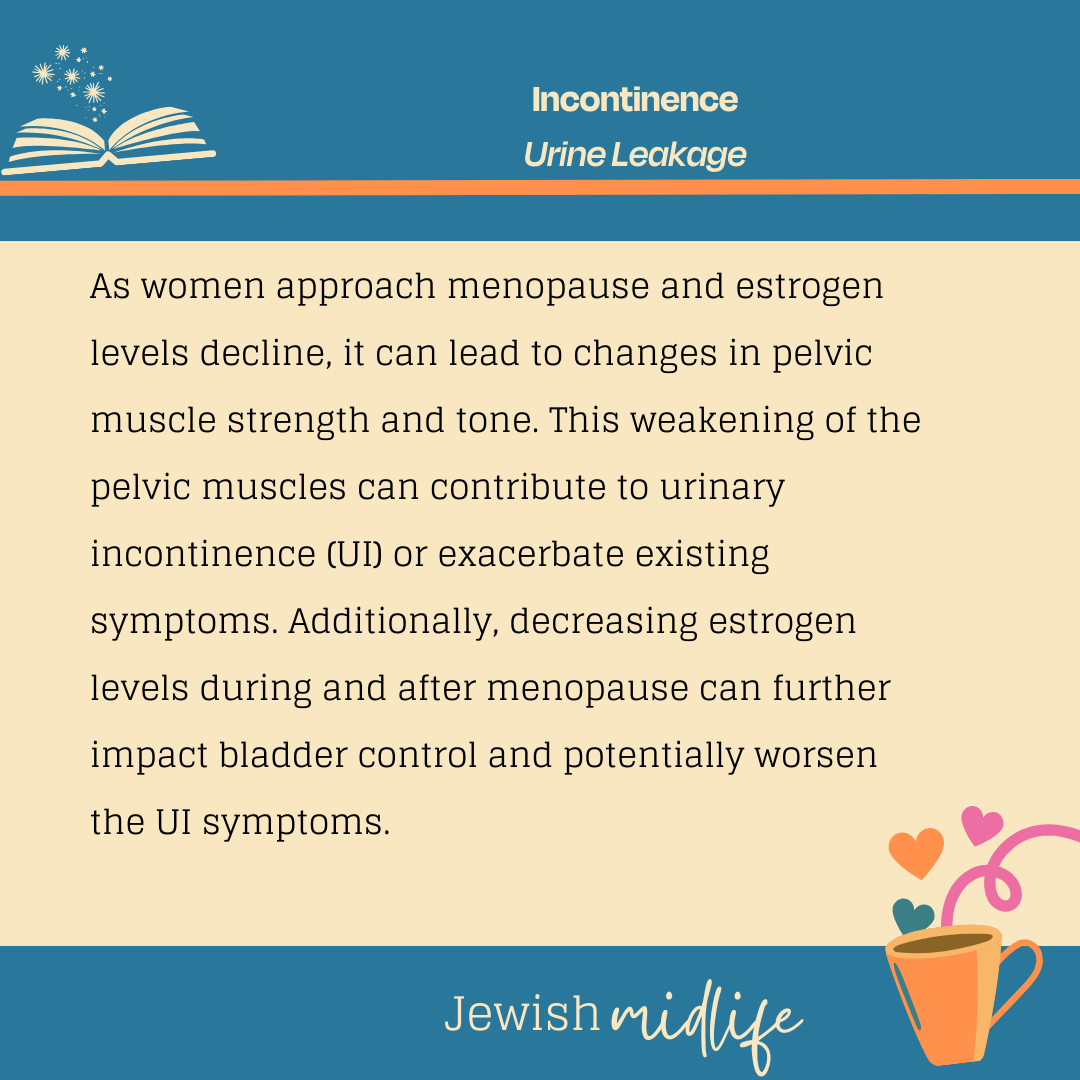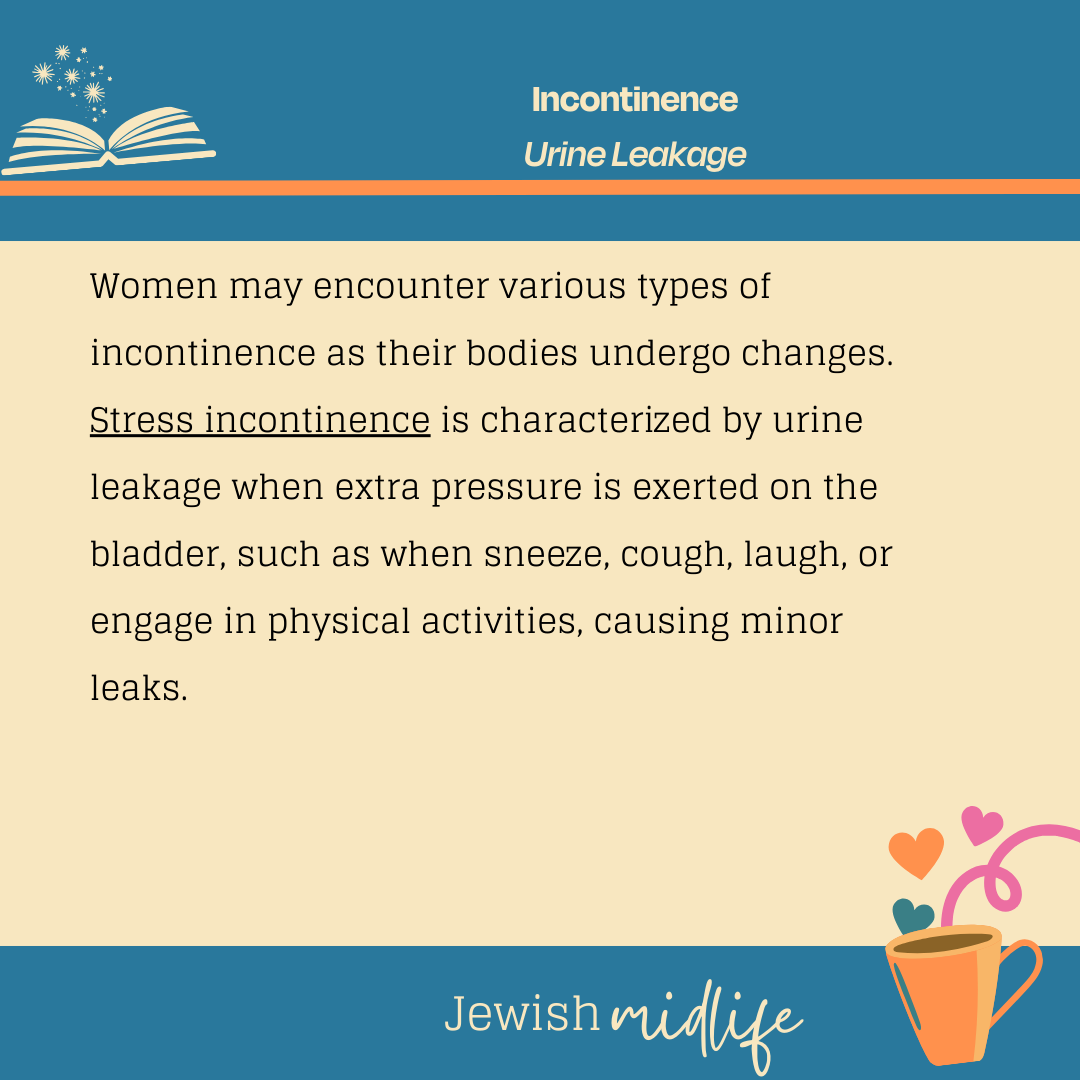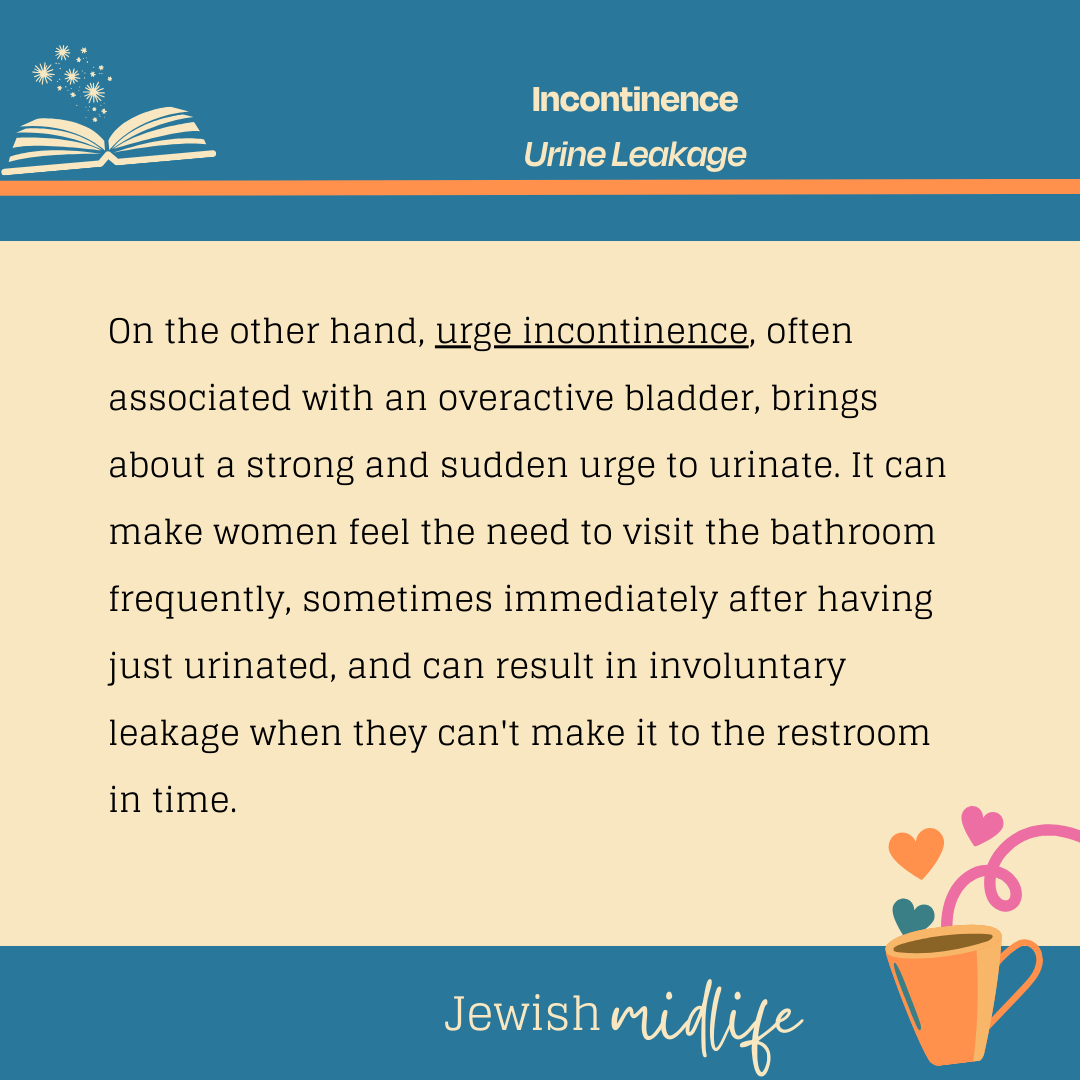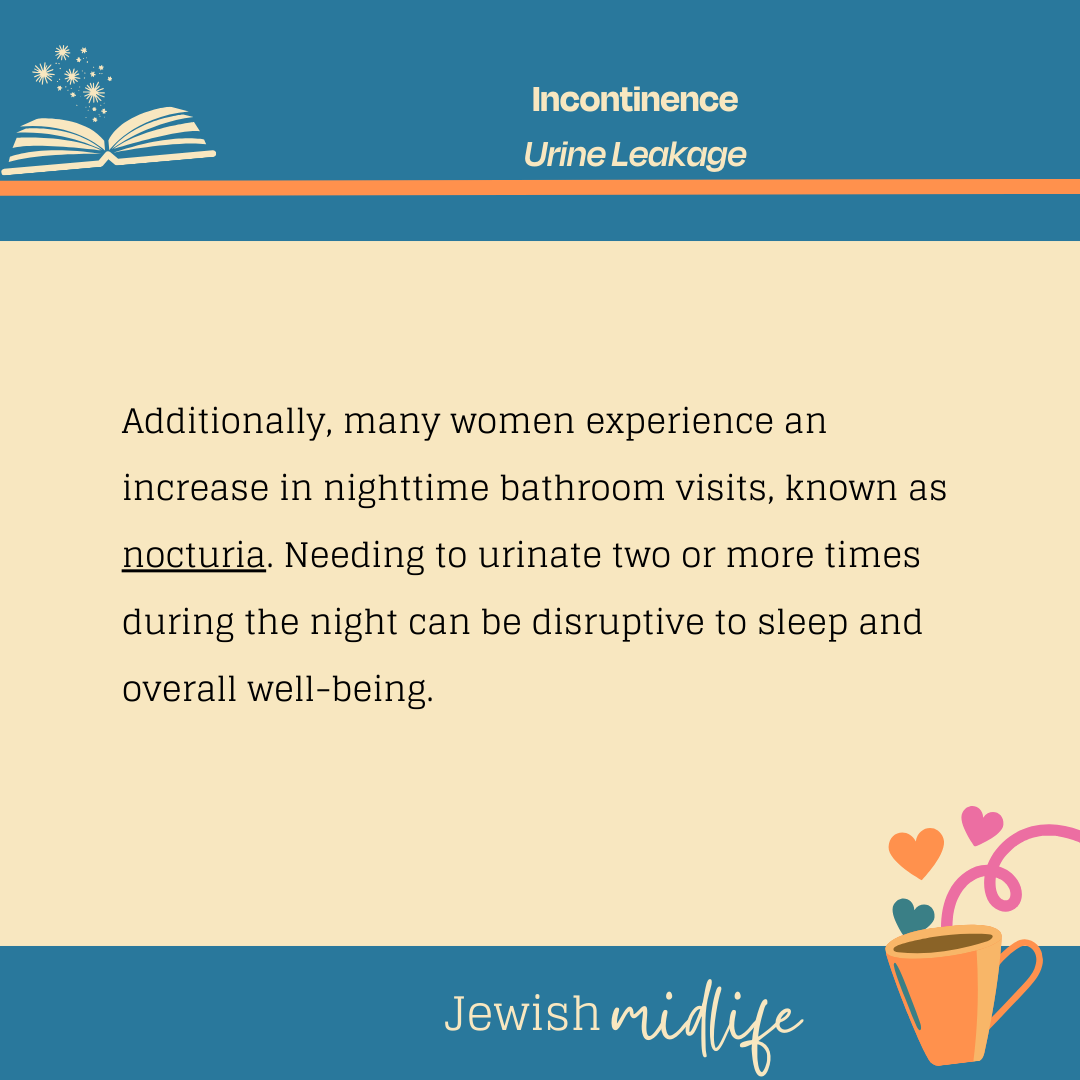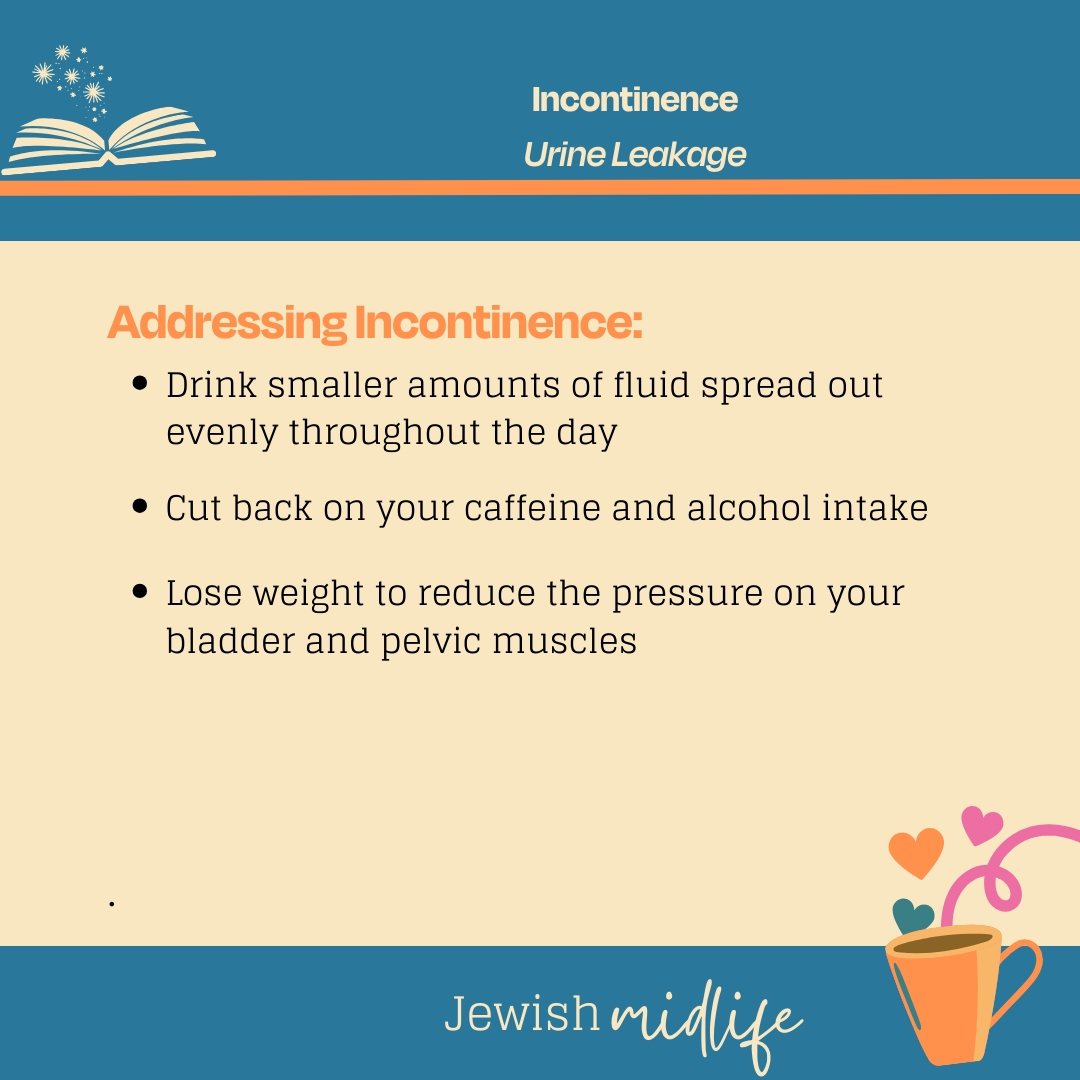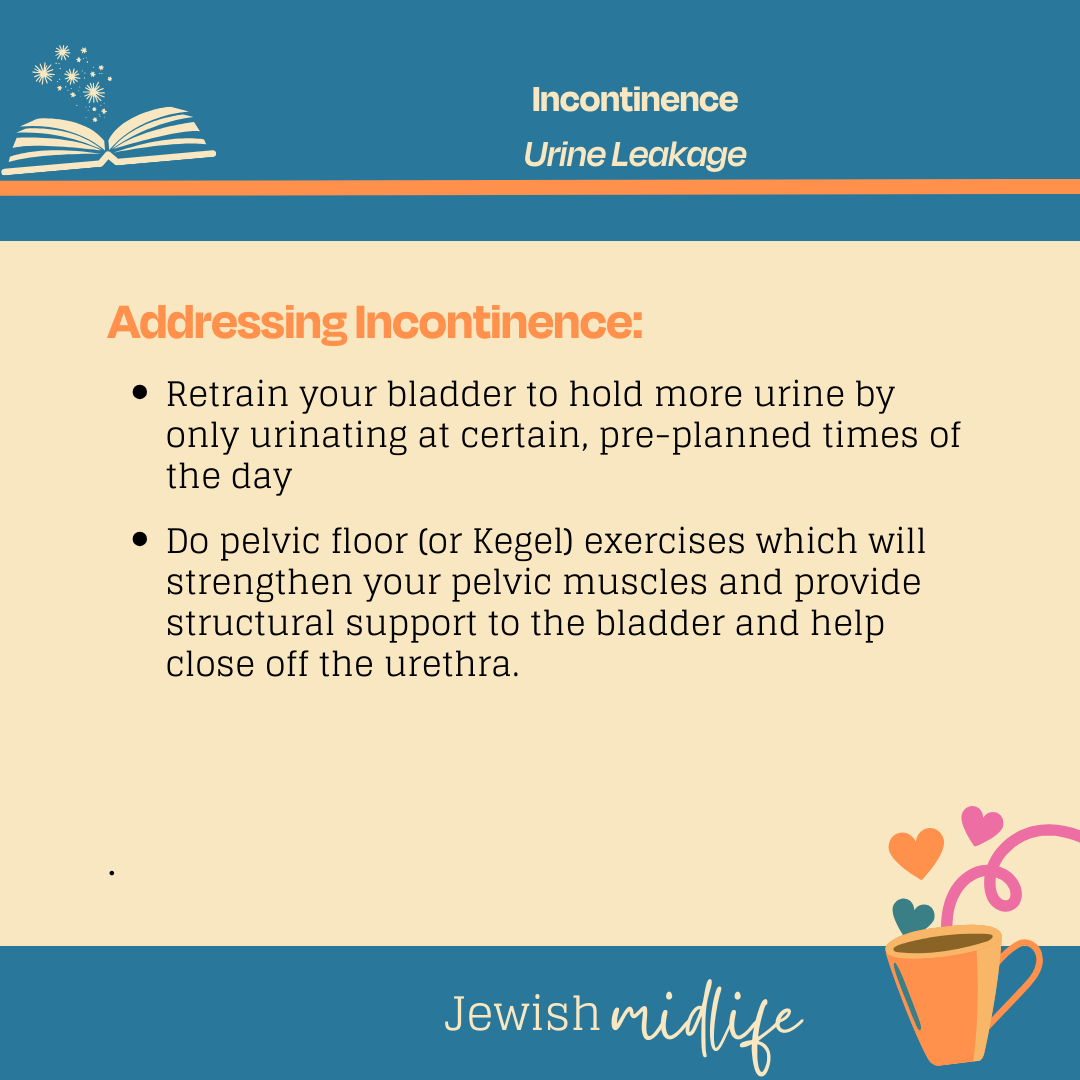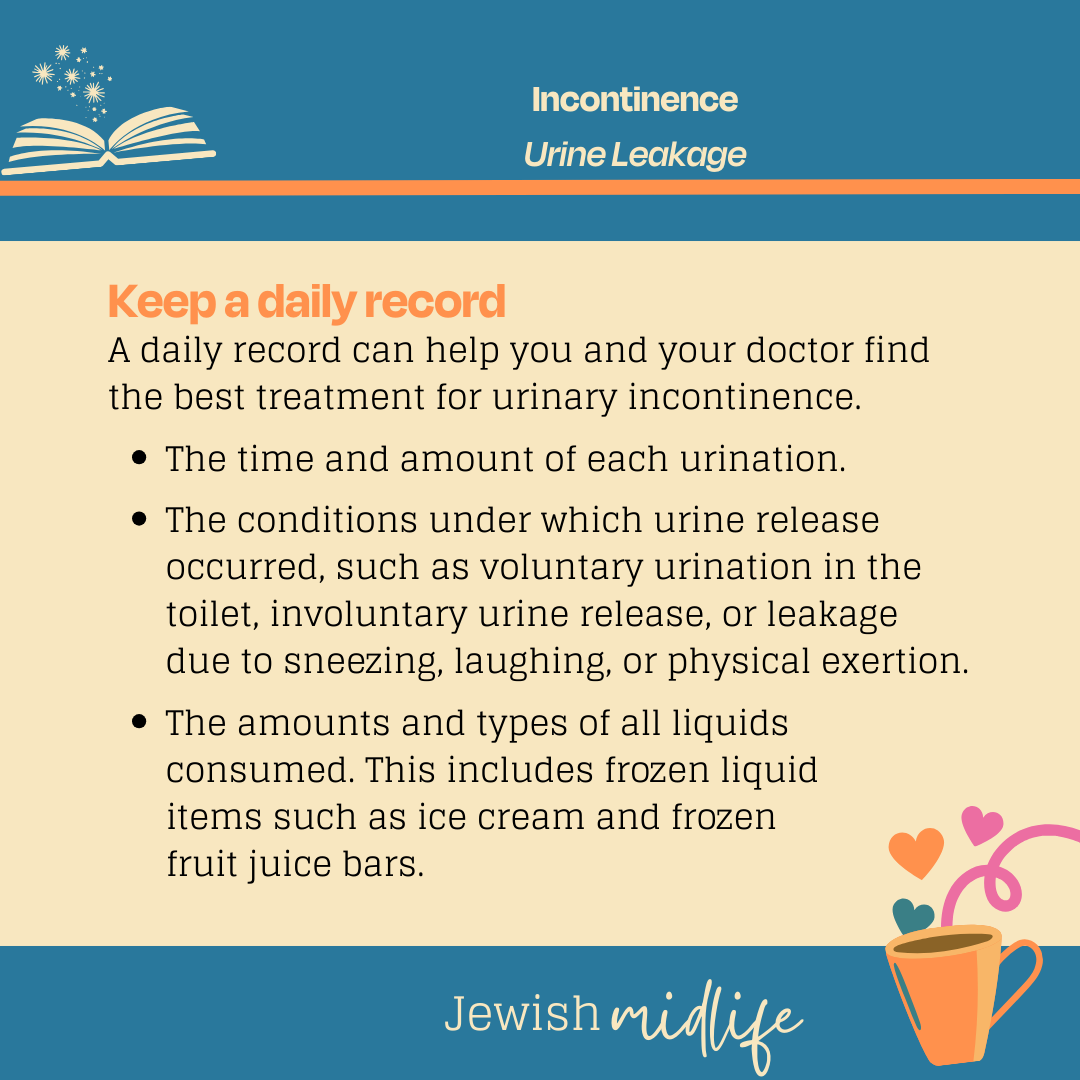As women approach menopause and estrogen levels decline, it can lead to changes in pelvic muscle strength and tone. This weakening of the pelvic muscles can contribute to urinary incontinence (UI) or exacerbate existing symptoms. Additionally, decreasing estrogen levels during and after menopause can further impact bladder control and potentially worsen UI symptoms.
Women may encounter various types of incontinence as their bodies undergo changes.
Stress incontinence is characterized by urine leakage when extra pressure is exerted on the bladder, such as when sneeze, cough, laugh, or engage in physical activities, causing minor leaks.
On the other hand, urge incontinence often associated with an overactive bladder, brings about a strong and sudden urge to urinate. It can make women feel the need to visit the bathroom frequently, sometimes immediately after having just urinated, and can result in involuntary leakage when they can’t make it to the restroom in time.**
Additionally, many women experience an increase in nighttime bathroom visits, known as nocturia. Needing to urinate two or more times during the night can be disruptive to sleep and overall well-being.**
What you can do:
- Drink smaller amounts of fluid spread out evenly throughout the day
- Cut back on your caffeine and alcohol intake
- Lose weight to reduce the pressure on your bladder and pelvic muscles
- Retrain your bladder to hold more urine by only urinating at certain, pre-planned times of the day
- Do pelvic floor (or Kegel) exercises which will strengthen your pelvic muscles and provide structural support to the bladder and help close off the urethra.
- Medical therapy with drugs
- Surgery
Keep a daily record
- A daily record can help you and your doctor find the best treatment for urinary incontinence.
- The time and amount of each urination.
- The conditions under which urine release occurred, such as voluntary urination in the toilet, involuntary urine release, or leakage due to sneezing, laughing, or physical exertion.
- The amounts and types of all liquids consumed. This includes frozen liquid items such as ice cream and frozen fruit juice bars.
